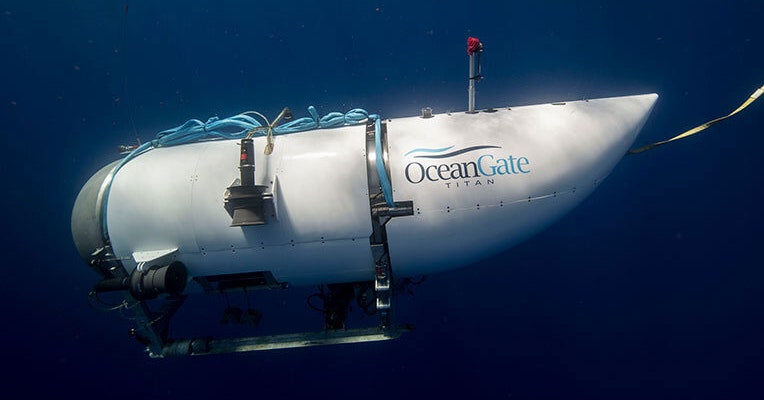Sunday a called 22-foot submarine Titan went missing while traveling to the wreckage of the Titanic. There were five people on board. When the submarine’s oxygen supply dwindled, authorities launched a desperate search of the seabed, which covered an area the size of Massachusetts. Rescue ships pinged the ocean with sonar, hoping to detect the vehicle’s shape, and listened in with microphones.
Now the United States Coast Guard has announced that a remote-controlled vehicle has found the wreck 500 meters from the bow of the Titanic on the sea floor, some 12,500 feet deep. “The debris is consistent with the catastrophic loss of the pressure chamber,” Vice Admiral John Mauger said at a news conference at the Coast Guard base in Boston.
The first piece of debris discovered was the nose cone of the ship and then a large debris field containing the forward bell of the pressure hull. “That was the first indication of a catastrophic event,” said Paul Hankins, a salvage supervisor for the US Navy. Search crews then found a smaller debris field containing the other end of the pressure hull. Mauger added that the remotely operated vehicles would remain on site to collect evidence.
The submarine’s operator, OceanGate, confirmed the loss of the vessel in a statement: “This is an extremely sad time for our dedicated staff who are exhausted and deeply mourning this loss. The entire OceanGate family is deeply grateful to the countless men and women from multiple organizations of the international community who have contributed extensive resources and worked so hard to this mission.” The company did not immediately respond to a request for further comment.
The debris indicates the vehicle imploded, Mauger said, though authorities can’t yet say when this happened. Mauger said the rescue effort used sonar-equipped buoys in the water around the Titanicthe wreckage for the past 72 hours and failed to notice the implosion, suggesting it had happened before. At this depth, the pressure is extraordinary, about 5,500 pounds per square inch — more than 360 times the hydrostatic pressure people are exposed to at sea level. “Death would have been instantaneous,” Dale Mole, a former US Navy medic, told the BBC.
“While this has had some successful dives, things are tired,” said Jules Jaffe, a research oceanographer at Scripps Institution of Oceanography. “So my theory is that after several dives the strength of the material started to decline, and that’s probably more in the joints than the actual surfaces.”
If you’re on an airplane and the fuselage is compromised in some way, for example if an emergency door comes loose, the pilot can still very well land the plane safely. But at 12,500 feet deep in the ocean, the pressure is so great that a rupture won’t just let water in. It leads to catastrophic ship failure. “It’s toast,” Jaffe says. “The conclusion that there was a rupture in the hull is certainly unanimously supported by the finding of fragments. “As far as I’m concerned, there’s no other option.”

